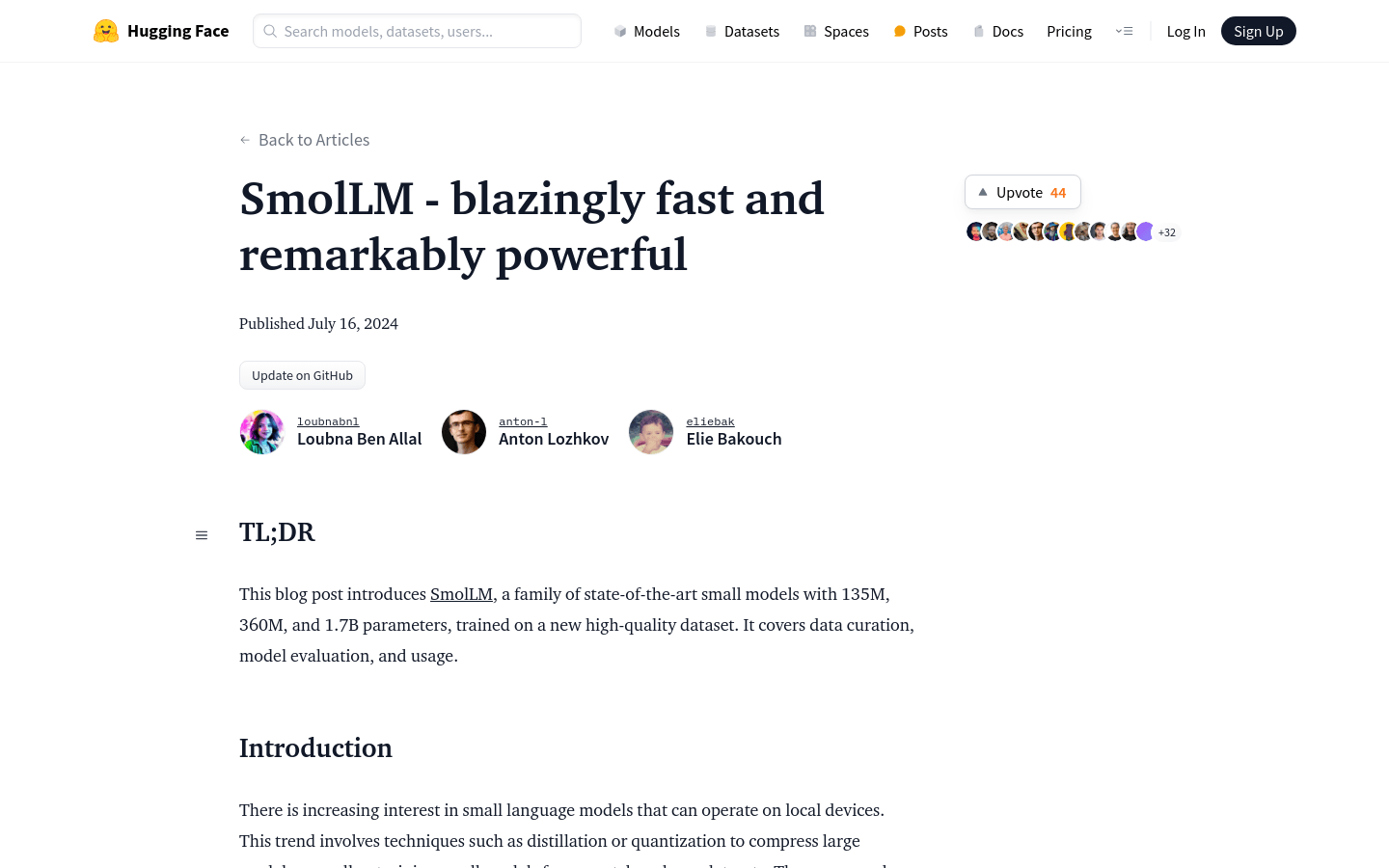

Smollm
Overview :
SmolLM is a series of the latest small language models, including versions with 135M, 360M, and 1.7B parameters. These models are trained on a carefully curated high-quality training corpus and can run on local devices, significantly reducing inference costs and improving user privacy. SmolLM models have performed well in various benchmark tests, including tests of common sense reasoning and world knowledge.
Target Users :
SmolLM models are suitable for developers and researchers who need to run language models on local devices. They are particularly suitable for applications that require efficient inference in resource-constrained environments, such as smartphones, laptops, etc. Additionally, for applications that need to protect user privacy, SmolLM models provide an effective solution.
Use Cases
Implementing natural language processing tasks on smartphones, such as speech recognition and text generation.
Performing code generation and debugging on laptops to improve programming efficiency.
Assisting students in understanding complex concepts and knowledge quiz in educational applications.
Features
Support multiple parameter scales: 135M, 360M, and 1.7B parameters.
Trained on high-quality datasets for high performance.
Suitable for local devices, reducing inference costs and improving privacy protection.
Performed well in various benchmark tests, testing common sense reasoning and world knowledge.
Support multiple hardware configurations, from smartphones to laptops.
Provide ONNX and WebGPU demos for easy deployment and use.
Support instruction tuning, using publicly licensed instruction datasets for training.
How to Use
1. Visit the Hugging Face page of the SmolLM model, download the required model.
2. Choose the appropriate model version according to the hardware configuration of the device (135M, 360M, or 1.7B parameters).
3. Deploy the model using the ONNX or WebGPU demo, ensuring that the model can run on the target device.
4. Perform instruction tuning, using publicly licensed instruction datasets for further training of the model.
5. Call the model in actual applications, performing natural language processing tasks such as text generation and knowledge quiz.
6. Monitor the performance and resource usage of the model, ensuring efficient inference on local devices.
Featured AI Tools

Gemini
Gemini is the latest generation of AI system developed by Google DeepMind. It excels in multimodal reasoning, enabling seamless interaction between text, images, videos, audio, and code. Gemini surpasses previous models in language understanding, reasoning, mathematics, programming, and other fields, becoming one of the most powerful AI systems to date. It comes in three different scales to meet various needs from edge computing to cloud computing. Gemini can be widely applied in creative design, writing assistance, question answering, code generation, and more.
AI Model
11.4M
Chinese Picks

Liblibai
LiblibAI is a leading Chinese AI creative platform offering powerful AI creative tools to help creators bring their imagination to life. The platform provides a vast library of free AI creative models, allowing users to search and utilize these models for image, text, and audio creations. Users can also train their own AI models on the platform. Focused on the diverse needs of creators, LiblibAI is committed to creating inclusive conditions and serving the creative industry, ensuring that everyone can enjoy the joy of creation.
AI Model
6.9M













